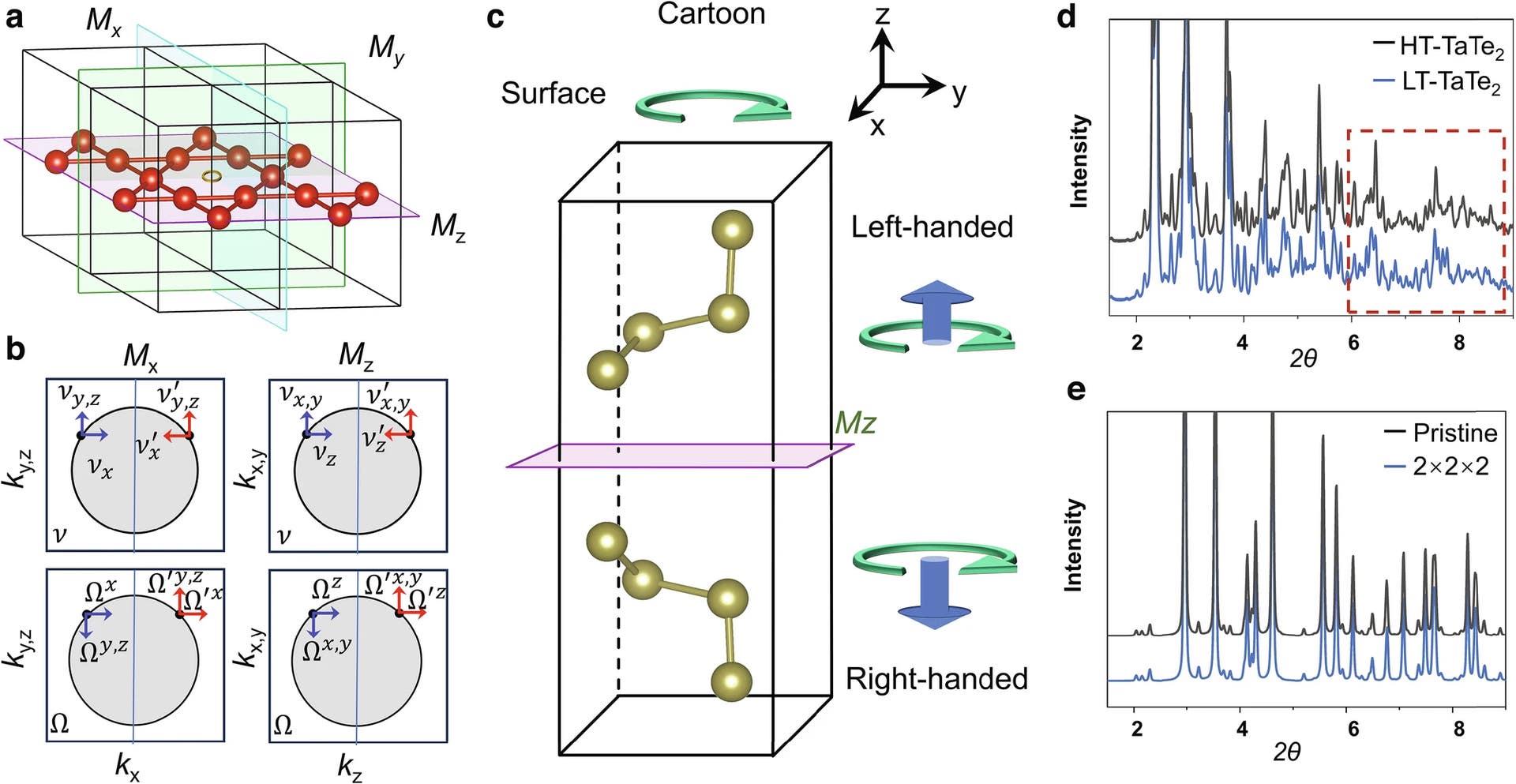Unlocking Hidden Quantum Symmetries: Princeton’s Discovery of Chiral States in Topological Materials

Published: June 2025
Source: The Brighter Side News
In a landmark achievement that pushes the frontiers of quantum physics and materials science, a Princeton University team has uncovered a hidden chiral quantum state in a material long believed to lack such properties. Led by Professor M. Zahid Hasan, this breakthrough—published in Nature Communications—resolves years of speculation and opens new doors to next-generation quantum and optoelectronic technologies.
The Enigma of Chirality in Quantum Materials
Chirality, or “handedness,” refers to the mirror-image nature of certain structures. It's seen in biology, chemistry, and even particle physics. However, its role in crystalline solids like the Kagome lattice was long debated. Using a custom-built scanning photocurrent microscope (SPCM), researchers observed chirality in a compound made of potassium, vanadium, and antimony (KV3Sb5) when cooled to near absolute zero.
“We’re finally able to resolve subtle quantum effects that had remained hidden in a topological quantum material,” said Hasan. The chiral state was confirmed through a phenomenon called the circular photogalvanic effect (CPGE), in which circularly polarized light induces electric currents—providing unambiguous evidence of symmetry breaking.
Breaking Symmetries: A New Quantum Frontier
Topological materials, known for their unique electron behavior, are foundational to future quantum devices. What makes this discovery exceptional is the simultaneous breakdown of inversion and mirror symmetries in a previously non-chiral material. This quantum phase transition—akin to water freezing into ice but at the electron level—marks the onset of a complex chiral charge order.
Graduate student Zi-Jia Cheng and postdoc Shafayat Hossain’s instrumentation played a pivotal role. By cooling samples to just 4 K and exposing them to mid-infrared circularly polarized light, they pinpointed the exact conditions under which chirality emerged—something prior tools like scanning tunneling microscopes failed to do consistently.
Beyond Discovery: Toward Future Applications
This research offers more than academic insight. It lays a foundation for practical advances in photonics, optoelectronics, and quantum information science. Materials that display chiral and topological order could be tailored for ultra-sensitive sensors, quantum switches, or light-based computing devices.
Hasan’s group has a long pedigree of quantum breakthroughs, including the discovery of 3D topological insulators. Their latest work represents a convergence of symmetry, topology, and electron correlation, and may serve as a roadmap for detecting hidden phases in even more complex materials.
What’s Next?
While the observed effects are now beyond doubt, the underlying mechanism remains elusive. As Hasan notes, “We confirmed the phenomenon, but we don’t yet have a rigorous theory as to why it occurs.” Nevertheless, this only heightens the anticipation for future discoveries. Tools like CPGE and SPCM could soon reveal more quantum states waiting to be found in high-temperature superconductors or layered magnetic systems.
Original article: Newly Discovered Quantum State Revolutionizes Material Science
Sponsored by PWmat (Lonxun Quantum) – a leading developer of GPU-accelerated materials simulation software for cutting-edge quantum, energy, and semiconductor research. Learn more about our solutions at: https://www.pwmat.com/en
📘 Download our latest company brochure to explore our software features, capabilities, and success stories: PWmat PDF Brochure
📞 Phone: +86 400-618-6006
📧 Email: support@pwmat.com

Comments
Post a Comment